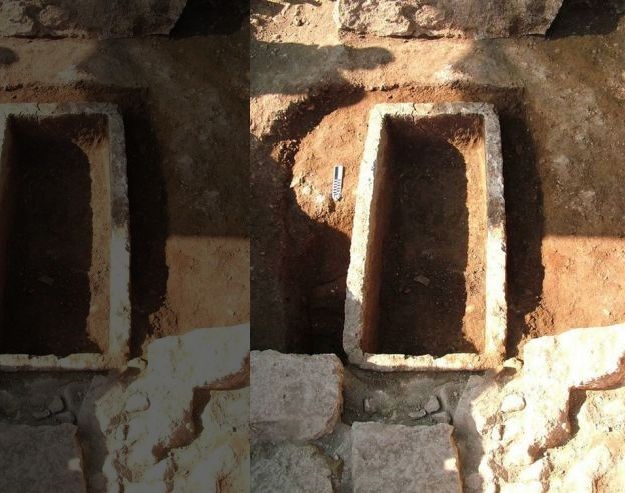
The tomb, dating back approximately 2,800 years, was built between 800 B.C. and 760 B.C., a time when Corinth was emerging as a major power and Greeks were building colonies on the coasts of the Mediterranean Sea.
The tomb consists of a shaft and burial pit that includes a limestone sarcophagus of about 5.8 feet long, 2.8 feet wide and 2.1 feet high. When the archaeologists opened the sarcophagus, they discovered a single individual buried inside, with just a few pieces of bones.
Excavation revealed several pottery vessels and a niche, sealed with a limestone slab, containing 13, mostly intact, vessels.
The discoveries were decorated with wavy, zigzag lines and meandering patterns that look like a maze. This style of pottery was popular at the time and archaeologists often refer to the era as Greece’s “Geometric” period.
The fact that the tomb included a sarcophagus and many vessels shows that the occupant was wealthy. Research revealed that the majority of the vessels were manufactured in Corinth, except two that were imported from Athens.
The tomb was discovered in 2006 during excavations by the American School of Classical Studies in an area near Corinth called the Panayia Field. Four other tombs had been found close to this tomb before 2006.
See all the latest news from Greece and the world at Greekreporter.com. Contact our newsroom to report an update or send your story, photos and videos. Follow GR on Google News and subscribe here to our daily email!



